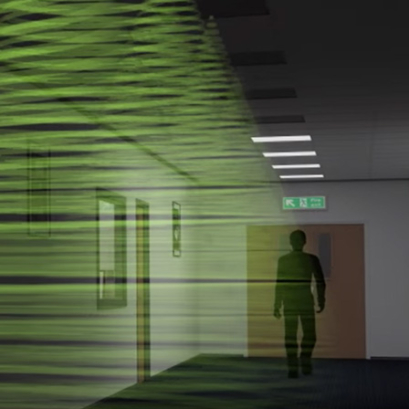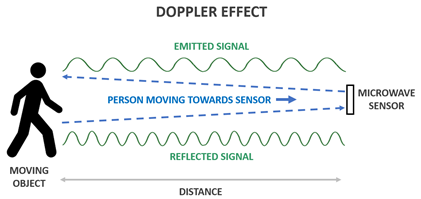
We are a leading manufacturer of quality internal and external lighting products for commercial, industrial and retail applications.
View all productsAt Ansell Lighting we design and manufacture an extensive range of luminaires for a diverse number of sectors and applications. Whatever the shape, purpose or style of your space, we have a lighting solution.
View all sectors & applicationsWe are a leading manufacturer of quality internal and external lighting products for commercial, industrial and retail applications.
Welcome to Ansell lightingWe are here to answer any questions you may have, help you find a stockist or speak to a local member of our team.
OCTO delivers the complete smart lighting package to transform the efficiency and ambience of commercial and residential spaces.
Find information regarding our product warranty, product data downloads and FAQs regarding lighting and technical terms. Here you will find support with training CPDs as well as useful lighting design and LED strip calculators.
Passive infra-red and microwave detection

In looking to produce a more comprehensive editorial document on the topic of Passive Infra-Red Sensor detection and that of Microwave Sensor detection, it would seem logical to firstly consider offering some details on each method of operation separately, before considering both together and quantifying their advantages and disadvantages.
PASSIVE INFRA-RED DETECTION
Put simply, a Passive Infra-Red Sensor, commonly referred to as a PIR, is basically an electronic sensor which measures the infrared radiation being detected from objects within its field of view and is generally used for the automatic activation and control of lighting equipment as well as in security alarm systems.
Firstly, the PIR sensor does not detect movement, rather it operates utilising the detection of positive differential change of heat through the measurement of infrared radiation, where this type of emission is not visible to the human eye. The PIR sensor has two Infra-Red Sensitive Slots, with each slot being made from a specialised material sensitive to infrared radiation. Under normal operating conditions, the sensor remains in an idle state where both the IR slots are synchronised and aligned in detecting equal amounts of infrared, which is that being radiated from the construction and fabric of the space, however, when a warm body moves across the space, one half of the sensor intercepts the change which in turn causes a positive differential change between the two halves of the sensor and it is this change in pulses which activates the operation of switching on of the lighting equipment. When the warm body has left the space the sensor generates a negative differential change, thereby returning the equilibrium and alignment between the two halves of the sensor, resulting in the deactivation of the lighting.

The Passive Infra-Red Sensor is as its name suggests, a passive device which detects movement through an infrared radiation source, where the warmer the body being detected, the greater the amount of infrared radiation being emitted, however where the ambient temperature within the space in which the sensor is located is the same or very similar to that of the body being detected, there is then no change in infrared radiation and the sensor will not operate. In other words, if a person has a body temperature of around 37°C and the ambient temperature within the space is also at the same 37°C, then no detection will take place and the lighting equipment will not be activated.
A more technical explanation might be that a PIR, basically consists of three components, the electronic circuitry contained within the unit, the pyro-electric sensor, and the Fresnel Lens. The circuitry just processes the output of the pyro-electric sensor to determine when a change is observed indicating movement within the space. The pyro-electric sensor is basically an analogue device which has two detector elements, one being wired so that upon receipt of infrared radiation, it emits a low voltage and the other to emit a high voltage. When equilibrium is in place, both receive equal amounts of radiation, meaning the emitted voltage is also equal, resulting in the lighting being in an off state, however when movement is detected within the field of view, the low and high voltages within the pyro-electric sensor change, which therefore determines there is movement within the detection area. This will then activate the operation of switching on the lighting equipment being controlled from the PIR Sensor. The Fresnel Lens is the visible part of the sensor and is where the infrared radiation is received and then focuses this onto the sensor. The lens is segmented which means that multiple separate beams of infrared radiation are received, with each one corresponding to a separate segment within the field of view and the design of the lens is massively important, as it is that which determines the beam width and range of detection, as well as the sensitivity of the PIR Sensor.

MICROWAVE DETECTION
Unlike the PIR, which is a passive device, the Microwave Sensor is an active device, in that it emits several very low-level pulses of electromagnetic radiation which strike a target and are then bounced back to the receiving sensor, which utilises the ‘Doppler Effect’ to analyse the received information to determine if there are any moving objects within the field of view.
The first point to get across is that of a definition of microwave radiation, which is a form of electromagnetic radiation of electric and magnetic fields propagating at the speed of light and sensors which use this form of radiation are operating within a range from 300.0MHz to 40.0GHz and are defined as being ‘Microwave Sensors’. There are two types of sensors, passive which sense natural radiation, and active, which emit microwaves and then sense the reflected microwaves returning from contact with an object located within the area under observation, as in the case of the microwave sensor used for the control of lighting equipment.

The microwave sensor uses the doppler effect, to detect the velocity of a moving object within the field of detection and the presence or absence of the signal. The detection of an object from the microwaves emitted from the sensor are subsequently returned if there is a reflective object in the path. The phase difference between the transmitted signal and the received signal provides the frequency, which will determine the object’s velocity.
For the requirements of occupancy or motion sensing in lighting control applications, the use of microwave is an ideal solution, in that the waves are of low energy as well as invisible and inaudible for people within the location. Any deviation between the frequency of the radiation, emitted by the sensor and the received frequency, will indicate movement within the detection zone, where if the received frequency is higher, the object is moving towards the sensor, whereas if it is lower, the object is moving away from the sensor.
Microwave sensors are offered in two different versions, firstly ‘Monostatic’ where the sensor is contained within one unit and ‘Biostatic’ where the sensor is contained in two units, however for normal lighting installations the monostatic units are normally used, as they offer an ideal solution for external lighting applications, as being smaller and in one unit, makes for easier integral installation into light fittings. They are generally not seen once installed, therefore will not affect the aesthetics of the fitting, and they can work with a variety of light sources including LED operating very efficiently through the fitting diffuser. As such, they do not require any holes to be cut into the luminaire body, which means that their use, will not affect the ingress protection rating of the luminaire.
In considering the advantages and disadvantages of each technology, the plan is to start with the advantages and the disadvantages of the PIR Sensor, followed by the advantages and the disadvantages of the Microwave Sensor.
THE PIR SENSOR – Advantages
The PIR Sensor is deemed to be energy efficient, when compared to other sensors, in that they use less energy, at around 1.0Watt for a PIR compared to around 1.5Watts for the Microwave Sensor. The PIR Sensor does not require sound for detection and being a switch, which detects changes in heat, thereby eliminating the potential problem of any voice control noise. The PIR Sensor is a passive device which does not release any electromagnetic wave and as such there is no issue with any possible interference, when operating around sensitive testing equipment. The PIR normally has the lowest initial purchase cost and is ideally suited to the smaller application.
THE PIR SENSOR – Disadvantages
A PIR sensor is not generally programmed to be constantly sensing, in that, they are designed to cycle, which means the light must be fully switched off by the sensor, before it has the capability to start sensing again and this is generally because the emitted light itself may be deemed to interfere with the actions of the sensor. The PIR Sensor can be insensitive to detection when a person is walking directly towards the sensor and will not detect movement through temperature variation when both the ambient space and the person within the area of detection are at the same temperature. They are considered as being under sensitive within locations of higher background temperatures and over sensitive within locations of lower temperatures, whilst being more susceptible to false positives, where external influences, such as wind and leaves movement can possibly set them off.

THE MICROWAVE SENSOR – Advantages
Microwave sensors can be installed into virtually any environment, including ones which are not conducive to sensors in other ways, such as in areas of high heat conditions, or where the environment can damage photo-electric sensors and as a result, are considered as being one of the most adaptable sensor systems available. Microwave sensors can penetrate through walls and glass windows, and because of this, they may be deemed to cover multiple spaces as well as a wider area of detection, including large outdoor spaces and as such, they are frequently used where there is a need to protect huge property areas. They can be set to be constantly sensing for movement and therefore do not turn off in a space of high usage and encompass a consistent detection over all temperatures. Microwave sensors will decrease the number of false alarms without reducing the number of accurate positives, thereby increasing the accuracy of detection, while enhancing the simplicity of use. A microwave sensor has a continuous field of detection zone whereas a PIR sensor has a slotted detection zone and as such a PIR sensor may miss out on the detection of objects, making them better for some security applications compared to PIR sensors.
THE MICROWAVE SENSOR – Disadvantages
The fact that a microwave sensor can penetrate through walls and glass windows was seen as being a benefit, but the sensor will not penetrate through metal objects, which may be a concern for metal constructed buildings. It also means it has an inability to detect movement in areas behind metal objects located within the space. In having the capability of achieving detection through walls and glass may mean multiple false detections from adjacent spaces, or where a building is located adjacent to a main road, large box type vehicles and buses may also cause multiple false detections. Decent quality microwave sensors are more advanced and good when in use, however they are typically more expensive to purchase and have a higher sensitivity, resulting in possible activation without reason.
DUAL TECHNOLOGY
It is a known fact that many sensors have issues with false triggering, and this may be a concern with lighting equipment as well as security alarm systems, however using a combination of technologies within a single sensor application or using two separate sensors of different types for the same operation, can assist in reducing this false triggering. For the lighting to be activated, both cells within the single sensor or both the separate sensors, when wired together, must provide the combined activation signal, with the greatest benefit being that this scenario lowers the probability of a false activation of the lighting to be switched on, thereby potentially also reducing unwanted energy consumption of the lighting installation when not required.
You Might Also Be Interested In...

